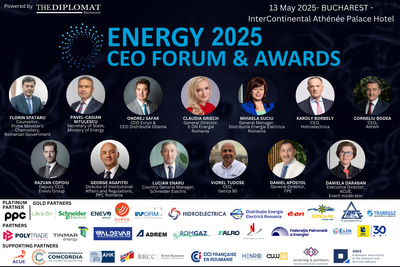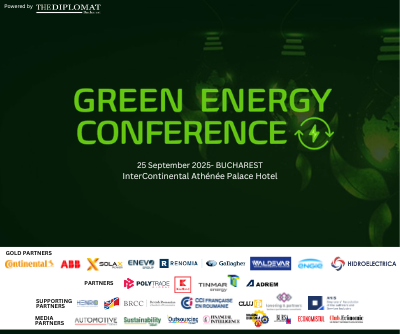INTERVIEW Daniel Anghel, PwC Romania: “Companies should understand their supply chains more deeply and in more dimensions; this will help prepare the industry for the next disruption”

COVID-19 accelerates and amplifies already existing challenges in the automotive industry, according to Daniel Anghel, Partner and Tax and Legal Services Leader PwC Romania. “For example, the challenges before the crisis were: the high cost and lack of charging infrastructure and range anxiety still key obstacles for sales success, the ambitious EU CO2 targets and potential penalty payments put high level of pressure on OEMs, the asset heavy distribution channels and operations that cause high cost of sales for OEMs and the heavy investments in new technologies such as autonomous vehicles, mobility and connectivity solutions,” he told The Diplomat-Bucharest. “Now, those are combined with a significant global decline in sales, the shutdown of production plants across the world with regional differences in timing to ramp up again, a major impact on the entire supply chain with global supply shortage throughout the value chain and a massive issue in the industry securing liquidity and funding.”
Anghel argues that the COVID-19 pandemic may result in a long-term revamping of supply chains to better focus on resilience. “With learnings from the outbreak, the competitive forefront of supply chain operations may likely move toward more comprehensive, proactive modelling. Companies should understand their supply chains more deeply and in more dimensions. This will help prepare the industry for the next disruption,” he explained. “Rather than suspending investments, as the industry did in 2008-2009, with an eye to resuming them when the situation stabilizes, companies should re-evaluate strategies and portfolio investment in the context of different potential scenarios for the future. By remaining nimble, auto companies may navigate uncertainty today while preparing for an eventual recovery. In addition, for automotive companies with sound balance sheets and ready access to capital, the disruption caused by COVID-19 could offer an opportunity to gain new capabilities or access new markets via mergers and acquisitions (M&A).”
How do you see the evolution of the Romanian automotive industry during the COVID-19 recovery?
After several weeks of lockdown or reduced activity, most of the automotive factories are now opened. But they still do not work at full capacity. Social distancing is hard on an assembly line, even if there are many automated procedures. Also, labour shortages caused by sick leaves or the time required for sanitisation or to apply other safety measures will be a drag on firms’ productivity for a while.
Production bottlenecks caused by logistical and financial problems of global suppliers will determine the production ramp-up in Q2 2020.
We also see that some automotive producers are more optimistic and continue their investments and others more pessimistic and postpone them. But this is normal in a crisis.
At the sales level, the COVID-19 outbreak and resulting economic uncertainty reduced consumer demand in the short term leading to dampened new vehicle sales and deferred spending on nonessential maintenance, people default on car loans, many of which are owed to carmakers’ finance firms, and the value of second-hand cars dropped. Also given the low mobility, I think the trend will continue until the confidence in the economy recovery returns. For Romanian auto industry another vulnerability is its export-dependency. And, as we see from the beginning of the pandemic, the sales decreased sharply in the main export markets, such as France or Germany.
What are the main challenges for the automotive companies in the medium and long term?
COVID-19 accelerates and amplifies already existing challenges in the automotive industry. For example, the challenges before the crisis were: the high cost and lack of charging infrastructure and range anxiety still key obstacles for sales success, the ambitious EU CO2 targets and potential penalty payments put high level of pressure on OEMs, the asset heavy distribution channels and operations that cause high cost of sales for OEMs and the heavy investments in new technologies such as autonomous vehicles, mobility and connectivity solutions. Now, those are combined with a significant global decline in sales, the shutdown of production plants across the world with regional differences in timing to ramp up again, a major impact on the entire supply chain with global supply shortage throughout the value chain and a massive issue in the industry securing liquidity and funding.
What role will the epidemic play in the future of the car market?
In addition to immediate crisis response, mid- and long-term measures are necessary, such as ensuring the survival of the business by securing liquidity and creating flexibility, stabilize and reorganize internally, observe external factors, and ensure the ability of operations to smoothly ramp up and leverage opportunities to grow stronger from this crisis.
It is likely that the COVID-19 pandemic may result in a long-term revamping of supply chains to better focus on resilience. With learnings from the outbreak, the competitive forefront of supply chain operations may likely move toward more comprehensive, proactive modelling. Companies should understand their supply chains more deeply and in more dimensions. This will help prepare the industry for the next disruption.
For some companies, the COVID-19 crisis may also highlight some issues that have needed attention and can no longer wait. So, the companies now have the chance to use entrepreneurial opportunities by actively optimizing their products and investment portfolio.
What are the main concerns of manufacturers and suppliers for the foreseeable future?
The main concerns and vulnerabilities are mainly the low level of the demand and the possibility of the second or the third wave of pandemic.
At PwC, we elaborate four possible scenarios regarding the evolution of the automotive industry:
- Impact. Production shortfalls in the months February and April will not make up, but merely return to the expected rates.
- Incentive. European Governments quickly agreed and coordinated sales incentives, like in 2008-2009, which help OEMs and retailers sell off existing vehicle stocks. Immediate effects of incentive schemes on production volumes are limited at best, if not tuned towards eco-vehicles and first hand vehicles inducing immediate new car replacement demand.
- Deep Impact. Production is recovering only slowly due to damaged supplier networks. Disruptive effects on the economy and suppliers lead to a gradual recovery over several quarters.
- Double Dip. After the summer, a second COVID-19 wave will follow, which can be contained more effectively with more targeted measures. Overall effect is structural and extends into the following year.
How do you think the authorities should support the Romanian automotive industry in these difficult times?
The measures that have already been taken, such as supporting furloughs, VAT reimbursements and postponing the payment of some taxes that assured some liquidity and funding to all companies. Especially for the Romanian market could be the continuation of the “Rabla” program, maybe with some improvements on the electric and hybrid acquisitions. In addition, a set of measures should be undertaken by the authorities in order to improve the age of the Romanian car park and to support the less polluting vehicles. As such, indicators such as CO2 emissions, the age of vehicles circulating in Romania, EURO norm etc. should play an important part in the set-up of measures leading to the minimisation of air pollution levels and avoidance of infringements on air quality generated by vehicles’ circulation.
What should a company do to survive the epidemic? It all comes down to cost cutting?
Rather than suspending investments, as the industry did in 2008-2009, with an eye to resuming them when the situation stabilizes, companies should re-evaluate strategies and portfolio investment in the context of different potential scenarios for the future. By remaining nimble, auto companies may navigate uncertainty today while preparing for an eventual recovery. In addition, for automotive companies with sound balance sheets and ready access to capital, the disruption caused by COVID-19 could offer an opportunity to gain new capabilities or access new markets via mergers and acquisitions (M&A).
Major multinational automotive OEMs and suppliers should carefully consider their cash, liquidity and working capital strategies in light of the outbreak’s impact on the world economy and credit markets.



















